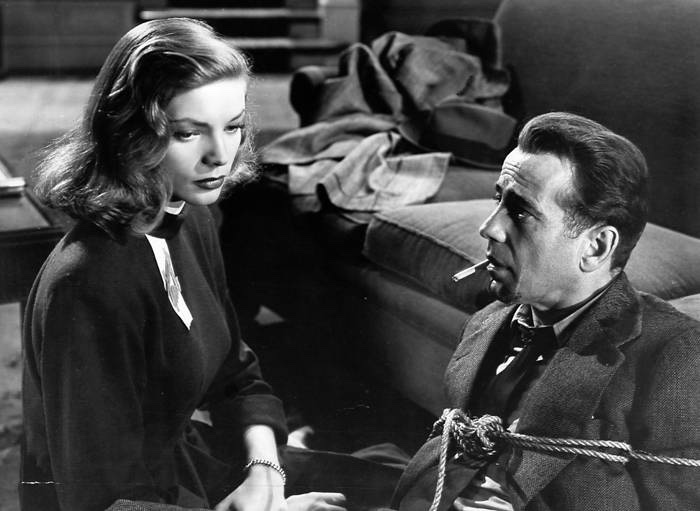In Hollywood during the 1930s, many different film genres were becoming popular. These included musicals, historic and biblical epics, comedies and so on. Because of the highly competitive studio system at the time, the big 5 major film studios all had a unique selling point for their films, for example MGM focused on bright, colourful and glitzy, glamorous musicals.
Warner Bros. Focused on gritty crime and gangster films, centred around social realism. This can be seen in their big star, Humphrey Bogart, who was known for not being a conventionally attractive film star, and was instead known for his rugged looks and weathered face. Around this time in Hollywood, particularly done by Warner Bros., the film noir movement was becoming popular. These were films centred around themes of pessimism and fatalism, typically characterised by gritty crime dramas following a weathered and burdened detective, smoking a cigar, sipping whiskey, wearing a trench coat and fedora while soft jazz played in the bar where they brooded over a tough case.
Because of Warner Bros.’ Focus on social realism and film noir, there are many aspects of Casablanca that reflect this, such as a brooding, pessimistic protagonist with an affinity for alcohol and cigarettes, much of the film being set in a dim and smoky bar/cafe, dim lighting, an elegant damsel in distress, corrupt police, and a (brief) murder mystery.
The studios at the time also boasted their stable of stars, glamorous and popular actors that would often serve as the pivot on which the film made money or not. The studios would plaster the faces of their biggest stars on posters, their names in big, bold letters. Stars, for this reason, would often play a caricature that they played in all films they were in, almost like they were playing themselves. Humphrey Bogart, for example, always played the gruff, weathered, pessimistic Rick, as that was what the audiences paid to see. The stars themselves were always presented in the most glamorous, eye-catching light in the films too, as the studios knew that they were what attracted most audiences. This is why Ilsa and Rick are presented the way that they are in the film.
Around the time that Casablanca was being produced, war had broken out in Europe, with France being occupied by Nazi Germany and England being pushed out of mainland Europe by Nazi Germany. Due to prevalent isolationist attitudes in America at the time, America had been refusing to get involved in the conflict, remaining completely neutral, as Rick does at the start of the film. Jack Warner, the head of Warner Bros. At the time, was an interventionist who believed that America should be getting involved in the war on the side of England and France and fighting against Germany. He wheeled Casablanca into production because he wanted there to be a film that was in support of a patriotic entrance into WW2 as the saviours of Europe and the victorious, powerful nation of America.
Black and white technology was old and commonly used by the 1940s, and colour was still a new expensive and unpolished/unperfected technology. Therefore, Casablanca was shot in black and white, as that technology had been perfected over decades of use and was viewed as a mature, beautiful way of filmmaking.

You must be logged in to post a comment.